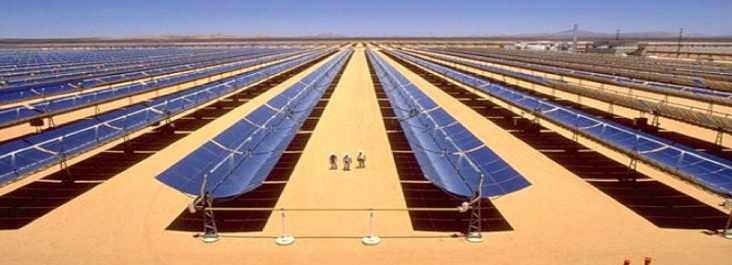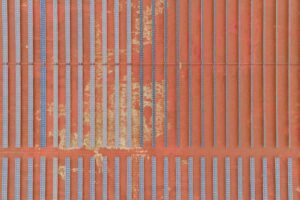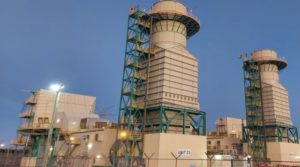The first 160MW of what stands to be the largest concentrating solar power (CSP) plant in both the Middle East and North Africa region and the African continent were brought online in Morocco’s Ouarzazate province on Friday, four years after construction of the massive project began.
The massive grid-connected Noor project – Noor means “light” in Arabic – uses solar thermal technology, with parabolic troughs that focus the sun’s energy on heating a fluid that in turn powers a generation turbine.
In 2012 w/ @andreborschberg we launched the construction of the largest #solar plant, inaugurated today in #Morocco pic.twitter.com/l1i0EPl719
— Bertrand PICCARD (@bertrandpiccard) February 4, 2016
Morocco chose CSP because of the need for storage, although it will also build solar PV and wind plants. Abdelkader Amara, the country’s energy minister, said the country intends to expand its interconnections to Spain and neighbouring Algeria, and also open a connection to Mauritania to the south and through that to other countries, where few people have access to electricity.
The next two phases of Noor will total 350MW, and are scheduled to come online by 2018 and should make it the largest CSP complex in the world.
Ultimately, the project is expected to have a combined capacity of 2GW by 2020 after all the units are complete.
The entire cost of the complex will come to about $9 billion and will be spread over at least four locations in Morocco, a spokesman for the Moroccan Agency for Solar Energy, known as Masen, said.
Currently, Morocco sources 98 per cent of its energy needs from fossil fuel imports, but is pushing to reach a 52 per cent renewable energy target within 15 years, for reasons of energy security and addressing climate change.
The World Bank, which along with the African Development Bank and the ClF have provided over US$1 billion in financing for the Noor project, says that the project will lower costs for CSP.
“Independent analysis concludes that the low-cost debt is already driving down the cost of CSP in Morocco by 25 per cent for Noor I and an additional 10 per cent for Noor II and III (achieved in 2015), thus reducing the government subsidy required to bridge the affordability gap for CSP,” noted World Bank in a press statement.
Bloomberg New Energy Finance chief solar analyst Jenny Chase said the real test for the solar thermal technology used at Noor would be in the operation over the next five to 25 years
“If it is not highly technically successful, more of the solar thermal pipeline in the Middle East and North Africa region is likely to be switched to PV,” she said.
The project was also funded by the European Investment Bank and Germany’s KfW, which each contributed €100 million.
The European Union and Germany’s environment ministry also funded the project with €30 million and €15 million, respectively.










